Foodways in transition: food plants, diet and local perceptions of change in a Costa Rican Ngäbe community
- PMID: 26739312
- PMCID: PMC4702369
- DOI: 10.1186/s13002-015-0071-x
Foodways in transition: food plants, diet and local perceptions of change in a Costa Rican Ngäbe community
Abstract
Background: Indigenous populations are undergoing rapid ethnobiological, nutritional and socioeconomic transitions while being increasingly integrated into modernizing societies. To better understand the dynamics of these transitions, this article aims to characterize the cultural domain of food plants and analyze its relation with current day diets, and the local perceptions of changes given amongst the Ngäbe people of Southern Conte-Burica, Costa Rica, as production of food plants by its residents is hypothesized to be drastically in recession with an decreased local production in the area and new conservation and development paradigms being implemented.
Methods: Extensive freelisting, interviews and workshops were used to collect the data from 72 participants on their knowledge of food plants, their current dietary practices and their perceptions of change in local foodways, while cultural domain analysis, descriptive statistical analyses and development of fundamental explanatory themes were employed to analyze the data.
Results: Results show a food plants domain composed of 140 species, of which 85 % grow in the area, with a medium level of cultural consensus, and some age-based variation. Although many plants still grow in the area, in many key species a decrease on local production-even abandonment-was found, with much reduced cultivation areas. Yet, the domain appears to be largely theoretical, with little evidence of use; and the diet today is predominantly dependent on foods bought from the store (more than 50 % of basic ingredients), many of which were not salient or not even recognized as 'food plants' in freelists exercises. While changes in the importance of food plants were largely deemed a result of changes in cultural preferences for store bought processed food stuffs and changing values associated with farming and being food self-sufficient, Ngäbe were also aware of how changing household livelihood activities, and the subsequent loss of knowledge and use of food plants, were in fact being driven by changes in social and political policies, despite increases in forest cover and biodiversity.
Conclusions: Ngäbe foodways are changing in different and somewhat disconnected ways: knowledge of food plants is varied, reflecting most relevant changes in dietary practices such as lower cultivation areas and greater dependence on food from stores by all families. We attribute dietary shifts to socioeconomic and political changes in recent decades, in particular to a reduction of local production of food, new economic structures and agents related to the State and globalization.
Antecedentes: Las poblaciones indígenas están viviendo rápidas transiciones etnobiológicas, alimentarias y socioeconómicas mientras se integran en sociedades modernizantes. Para entender mejor la dinámica de dichas transiciones, este artículo caracteriza el dominio cultural de las plantas comestibles y analiza sus relaciones con la dieta actual, y las percepciones para los cambios señalados por parte de los Ngäbe del sur de Conte-Burica, Costa Rica, mientras la producción de plantas alimentarias por parte de sus residentes se hipotetiza estar en drástica recesión con un descenso del área productiva y la implementación de nuevos paradigmas de conservación y desarrollo.
Métodos: Se realizaron listas libres extensas, entrevistas y talleres grupales para recolectar los datos entre 72 participantes sobre conocimiento de plantas comestibles, prácticas actuales alimentarias y percepciones de los cambios, mientras que se llevó a cabo análisis de dominios culturales, análisis estadísticos descriptivos y desarrollo de temas fundamentales para la interpretación de la información.
Resultados: Los resultados muestran un dominio de plantas alimentarias compuesto de 140 especies, de las cuales 85 por ciento crecen localmente, con un nivel de consenso cultural medio, y cierta variación asociada a la edad. A pesar de que muchas plantas aún crecen en el lugar, en muchas de las especies clave se observó un retroceso en el abastecimiento local y hasta el abandono total. Es por ello que el dominio parece ser en gran medida teórico, con poca evidencia de su uso; y la dieta hoy en día es predominantemente dependiente de comidas compradas en la tienda (más del 50 % de ingredientes básicos), muchas de las cuales no fueron sobresalientes o hasta reconocidas como plantas comestibles. Mientras que la mayoría de los cambios en la importancia de las plantas comestibles fueron atribuidos a cambios en preferencias culturales hacia productos procesados comprados en la tienda así como cambios en valores asociados con la agricultura y la auto-suficiencia alimenticia; los Ngäbe son mayoritariamente conscientes de los cambios en las actividades de subsistencia familiares, y la subsiguiente pérdida de conocimiento y uso de las plantas comestibles, siendo promovidos por cambios políticos y sociales, a pesar del incremento en cobertura boscosa y biodiversidad.
Conclusiones: Los hábitos agroalimentarios entre los Ngäbe están cambiando de formas diversas y de algún modo desconectadas: el conocimiento de plantas comestibles es variado, reflejando algunos de los cambios en las prácticas alimentarias, tales como menores áreas productivas y mayor dependencia en productos comprados en el comercio por parte de todas las familias. Atribuimos las transformaciones alimentarias a cambios socioeconómicos y políticos en décadas recientes, en particular a una reducción de la producción local de comida, nuevas estructuras y agencias económicas relacionadas con el Estado y la globalización.
Figures
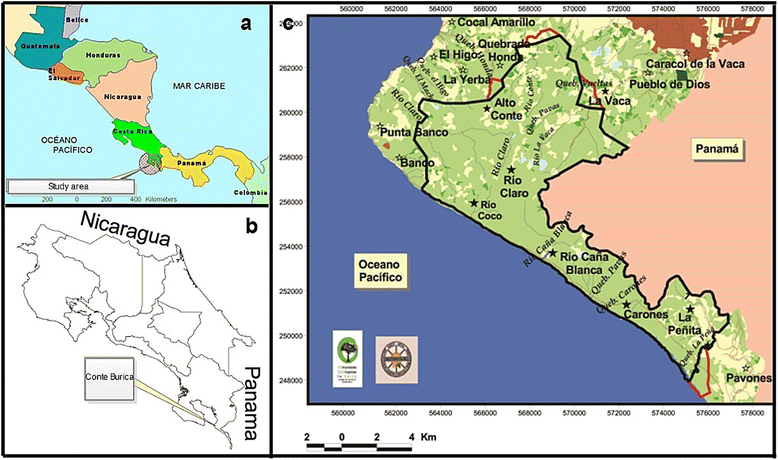
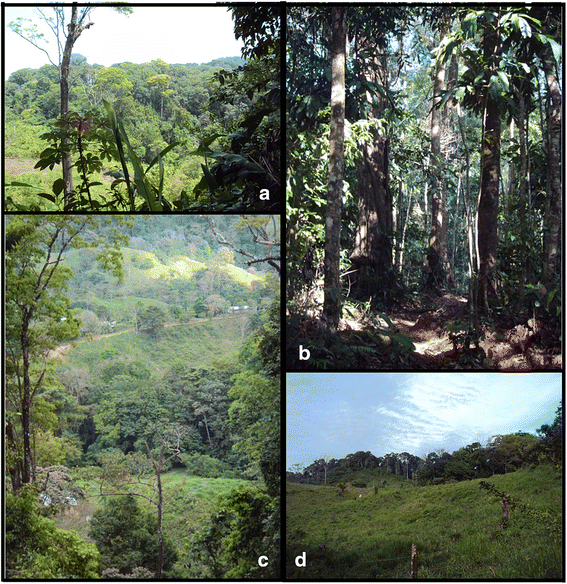
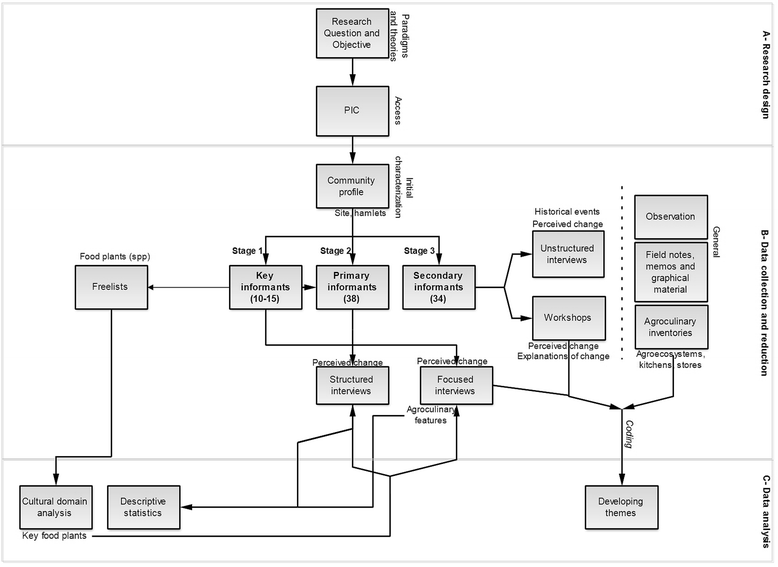

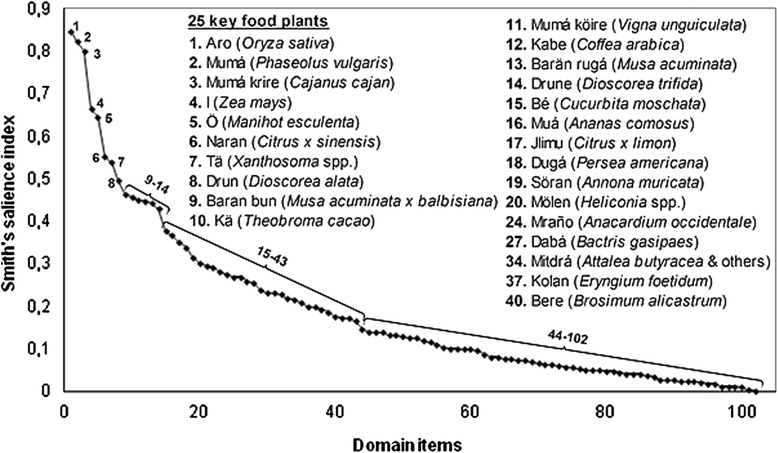
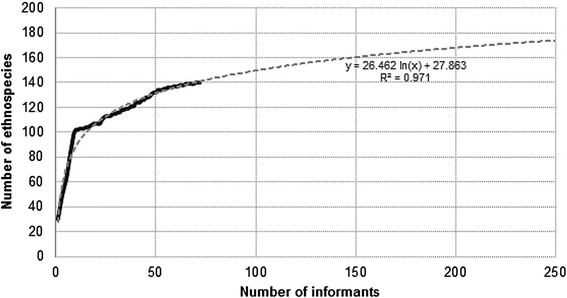
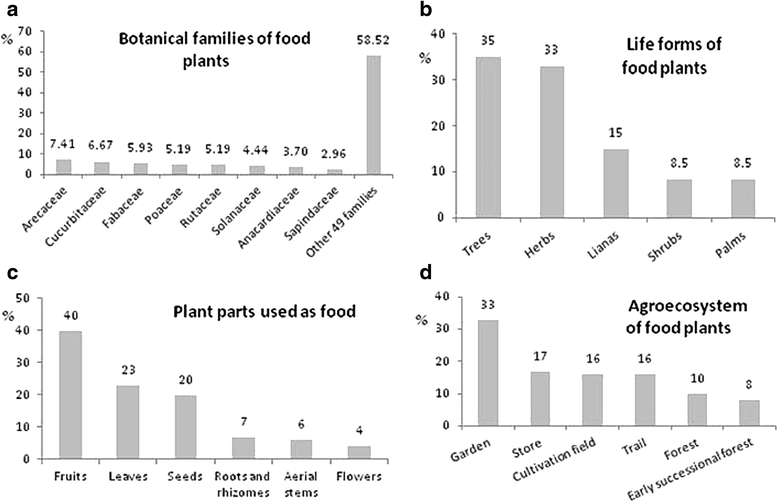


Similar articles
-
"We never ate like that, not fast food, or junk foods": accounts of changing maternal diet in a tourist community in rural Costa Rica.Ecol Food Nutr. 2013;52(6):479-96. doi: 10.1080/03670244.2013.824360. Ecol Food Nutr. 2013. PMID: 24083515
-
[An approach to food consumption in an urban environment. The case of west Africa].Sante. 1996 May-Jun;6(3):173-9. Sante. 1996. PMID: 8764452 French.
-
Rebuilding northern foodsheds, sustainable food systems, community well-being, and food security.Int J Circumpolar Health. 2013 Aug 5;72. doi: 10.3402/ijch.v72i0.21560. eCollection 2013. Int J Circumpolar Health. 2013. PMID: 23967414 Free PMC article.
-
Ethnopharmacology, food production, nutrition and biodiversity conservation: towards a sustainable future for indigenous peoples.J Ethnopharmacol. 2011 Sep 1;137(1):1-15. doi: 10.1016/j.jep.2011.05.027. Epub 2011 May 30. J Ethnopharmacol. 2011. PMID: 21645603 Review.
-
Disseminating knowledge about 'Local Food Plants' and 'Local Plant Foods'.Forum Nutr. 2006;59:75-85. doi: 10.1159/000095208. Forum Nutr. 2006. PMID: 16917174 Review.
Cited by
-
Examination of dietary habits among the indigenous Kuna Indians of Panama.Nutr J. 2019 Aug 1;18(1):44. doi: 10.1186/s12937-019-0469-8. Nutr J. 2019. PMID: 31370836 Free PMC article.
References
-
- Borge C, Castillo R. Cultura y Conservación en la Talamanca Indígena. San José (CR): EUNED; 1997.
-
- D’Ambrosio U. Ngäbe agroculinary transitions in Costa Rica. United Kingdom: PhD Dissertation. University of Kent at Canterbury; 2013.
-
- Camacho C. En la frontera del siglo XX. La exclusión de los guaymíes en Costa Rica. Escuela de Antropología y Sociología. Facultad de Ciencias Sociales: Universidad de Costa Rica; 1996.
-
- Instituto Nacional de Estadística y Censos-Costa Rica (INEC). Preliminary data from the 2011 census on indigenous territories. C 16. Costa Rica Población indígena por pertenencia a un pueblo indígena, según provincia y sexo. 2012. Available at: http://www.inec.go.cr. [Accessed 15 August 2012].
-
- Constenla A. La diversidad lingüística de Costa Rica: Las lenguas indígenas. Filología y Lingüística. 2011;37(2):93–106.
Publication types
MeSH terms
LinkOut - more resources
Full Text Sources
Other Literature Sources
Medical

